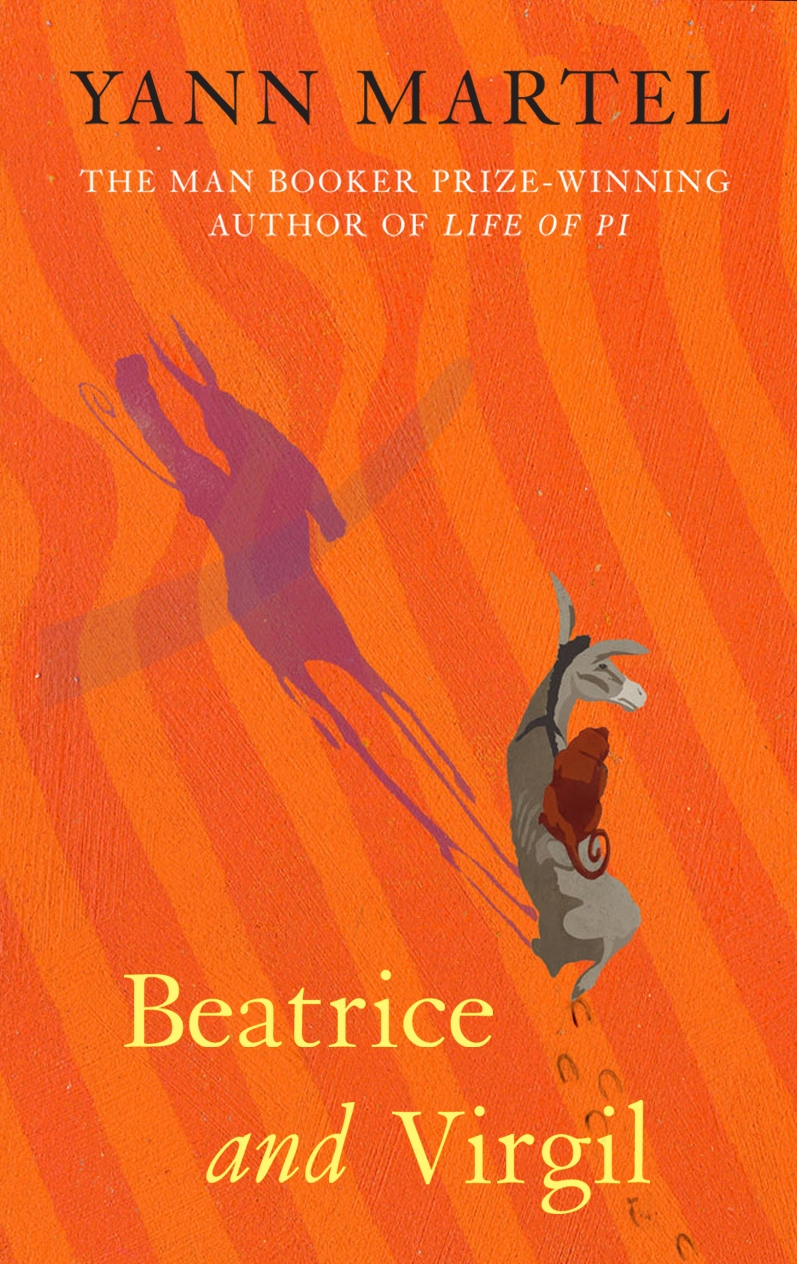
The book jacket describes this as a story of a monkey named Virgil and a donkey named Beatrice. And it is. Kind of. Henry is an author desperately in love with his Holocaust flip book idea. He wants to create one of the first fiction accounts of the Holocaust because, as he says “surely, amidst the texts that related what happened, those vital and necessary diaries, memoirs and histories, there was a spot for the imagination's commentary,” and he wants to balance this with an essay. Neither can stand alone, but they are not truly linked, so he suggests putting them in the same cover, back to back. The idea is wildly rejected. He then meets a taxidermist, also named Henry. Taxidermist Henry is writing a play about two creatures he stuffed and named Beatrice and Virgil.
The character of author Henry seems to be Martel himself; bestseller list book, difficulties creating a passionate strong second work, a unique experience, birth of said creative second work. He meets taxidermy Henry and together the two Henrys seem to function as the flip book author Henry wished to publish; creative story meets factual balance and grounding. Martel writes about an author writing a flip book while he stitches his own flip book into one piece. The creative Holocaust story is told in taxidermist Henry’s play about Beatrice and Virgil and the reader is grounded to reality through author Henry’s life. The ending of Beatrice and Virgil could illustrate Martel’s thoughts on how he must proceed in creating his fictional Holocaust work. The fiction must force itself into reality and reality must give it pass. Beatrice and Virgil reads like the making of Beatrice and Virgil, which I believe is what creates that feeling of torn through a wormhole.
When I closed this book, the first thing I thought of was a monument in Berlin entitled “Memorial to the Murdered Jews of Europe.” It’s a blunt and blatant title, but aside from that, it makes no assumptions about the Holocaust experience. It is a collection of cement blocks arranged in rows and rows. They start at your feet, barely inches high, and then soar to eight feet. A person is meant to walk between the blank gray walls and the shifting corridors and just think about the Holocaust. There is no statement of what the Holocaust is, was, caused, or could have been. It simply stands to force people to be confronted with this moment in history.
I take you to this monument because it is the closest reference I have to explain Beatrice and Virgil. I can’t discuss this as a traditional fiction piece because it doesn’t function as one. I was bored through the majority of this book; there’s no action, no character development, no real plot. But closing the book, it does cause one to think about the Holocaust, the “Horrors,” and how there are no words. It is this uncomfortable state of mind that one can’t express, that I believe was Martel’s goal. You’re thinking about the Holocaust; it’s pain and victims, it’s senselessness and creation of powerlessness. Perhaps this is what it was like to experience the Holocaust. There are no words or reason. There are only musing and near misses and laundry lists that attempt to explain the feeling. If it is, then Martel is a genius.
For those who are fans of Life of Pi, be prepared; the two works do not share a very common reading experience. It’s a heavier read that asks more from its reader than its predecessor. My advice: do not read this as a novel. Embrace it as an artistic experience. Focus on the emotions created as you take in the words. Do not try to make sense of the world of the dual Henrys and instead let your mind “feel” Beatrice and Virgil’s experience.
Excerpt from Beatrice and Virgil:
BEATRICE: What name will it have?
VIRGIL: That's a good question.
BEATRICE: The Terror?
VIRGIL: Sounds like something done quickly, involving running and panting. Not enough calculation to it. Besides, it's been used before.
BEATRICE: The Tohu-bohu?
VIRGIL: Sounds like a dairy-free dessert.
BEATRICE: The Horror?
VIRGIL: That's stronger.
BEATRICE: Even better: the Horrors, plural but used in a singular construction, the curve of the s like a ladle in a soup from hell, serving up the unthinkable and the unimaginable, the catastrophic and the searing, the terror and the tohu-bohu.
VIRGIL: We'll call it the Horrors.
BEATRICE: Good.
(pause)
BEATRICE: So, how are we going to talk about the Horrors?
Courtesy of Spiegel & Grau


